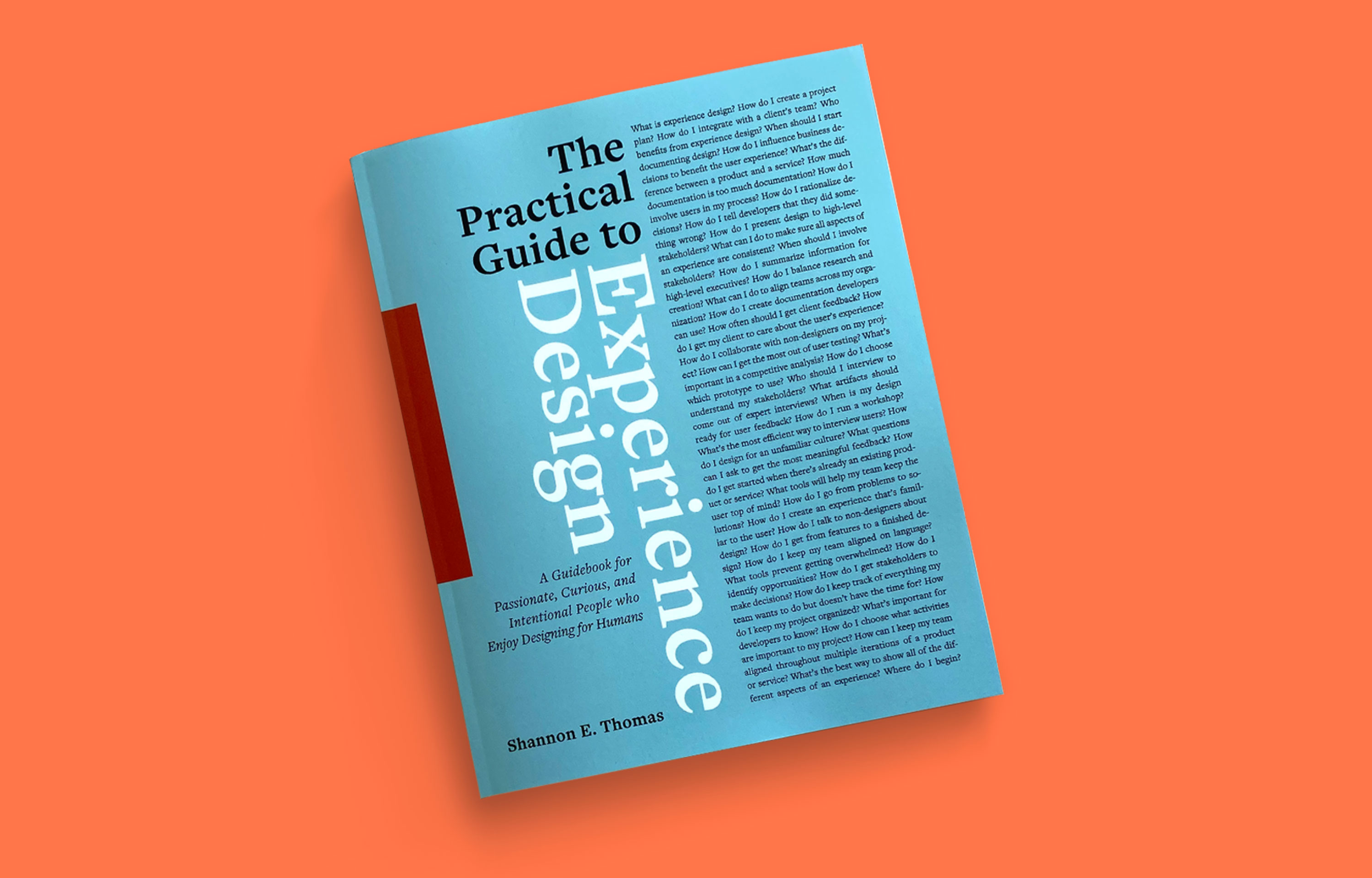About the Author

Shannon E. Thomas has published The Practical Guide to Experience Design and I am excited. I may be biased because we’ve been partners for years, but let me explain why I believe this book by this person is important.
I first met Shannon when she joined the interactive marketing agency where I worked. She was a fine arts major hired for her talent and efficiency with graphic design, but it was quickly apparent to our development and operations teams that she was their ally. They had finally found someone in the creative department they could depend on for organization and thoughtful UI design.
After we moved to Seattle, she took those skills to Microsoft and the gaming industry, earning an enviable base of respect from colleagues who watched her steer every product she touched towards more beautiful and more useful. Her curiosity and drive to be effective even led her to a stronger perspective on methodologies than many development managers I know. She asked around if there were any straightforward introductions to read, but real world approaches are too diverse; she had to learn by participating.
By the time we worked together again, at frog in Munich and back to Seattle, I was not surprised to see a pattern emerge. The charismatic young artist was invited into a project because she can draw or make things look great, but soon would be found indispensable for her holistic perspective and abilities. She quickly built up a reputation around the world as a “designer’s designer” and leader in what we might today call product management. There weren’t yet any great textbooks for this, and arguably even today they have narrow focus or are selling an approach.
Always humble about the learning opportunities available to her, it became a mission of hers to help other designers grow. So when we moved to Amsterdam and she grew freelancing into a boutique agency, The Artificial became not only a UX and product consultancy but also a sort of school for talented young designers. Even while learning to manage employees, projects, and clients, I was amazed to watch her act as a “force multiplier”, enabling small teams to design broad and detailed experiences I would have expected to take far more effort and time.
Naturally, her former colleagues, peers, employees, and clients have been asking her for pointers all along the way: What can I read that will help me learn to approach such diverse projects? What shortcut can I take to understanding design as a process? Where do I learn about why we do some of these things, instead of just blindly performing rituals?
I helped her search and search for such resources. We built an extensive library. Mostly, though, we had to build up our own knowledge base and Shannon found herself increasingly writing emails and wiki pages to answer these questions.
Now she has taken those answers and properly designed a book to share them. She tried many approaches, tested them with designers and others, and refined. Now, finally, the first edition is ready. It will be a success if a few aspiring designers are inspired by it, a few established ones find it useful to check their work, or a few non-designers learn to appreciate the value of the activities outlined within. Though I think it fills an important void in the design industry between paint-by-numbers and navel-gazing and is likely to earn a place on many desks, not just bookshelves, for years to come.
I posted this on linkedin.com in May 2020 during week 2408.
For more, you should follow me on the fediverse: @hans@gerwitz.com